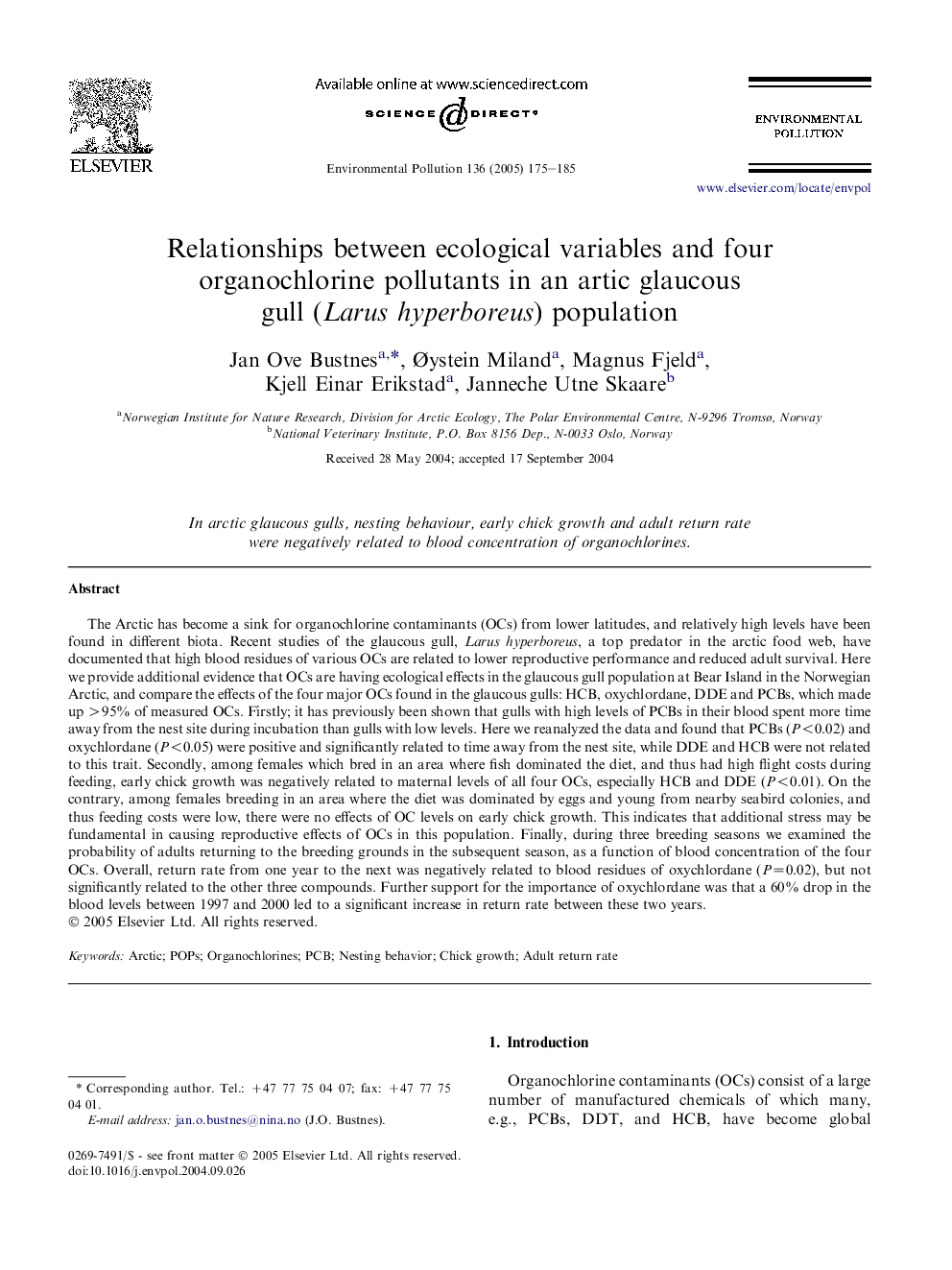| کد مقاله | کد نشریه | سال انتشار | مقاله انگلیسی | نسخه تمام متن |
|---|---|---|---|---|
| 9456331 | 1309190 | 2005 | 11 صفحه PDF | دانلود رایگان |
عنوان انگلیسی مقاله ISI
Relationships between ecological variables and four organochlorine pollutants in an artic glaucous gull (Larus hyperboreus) population
دانلود مقاله + سفارش ترجمه
دانلود مقاله ISI انگلیسی
رایگان برای ایرانیان
کلمات کلیدی
موضوعات مرتبط
علوم زیستی و بیوفناوری
علوم محیط زیست
شیمی زیست محیطی
پیش نمایش صفحه اول مقاله

چکیده انگلیسی
The Arctic has become a sink for organochlorine contaminants (OCs) from lower latitudes, and relatively high levels have been found in different biota. Recent studies of the glaucous gull, Larus hyperboreus, a top predator in the arctic food web, have documented that high blood residues of various OCs are related to lower reproductive performance and reduced adult survival. Here we provide additional evidence that OCs are having ecological effects in the glaucous gull population at Bear Island in the Norwegian Arctic, and compare the effects of the four major OCs found in the glaucous gulls: HCB, oxychlordane, DDE and PCBs, which made up >95% of measured OCs. Firstly; it has previously been shown that gulls with high levels of PCBs in their blood spent more time away from the nest site during incubation than gulls with low levels. Here we reanalyzed the data and found that PCBs (P<0.02) and oxychlordane (P<0.05) were positive and significantly related to time away from the nest site, while DDE and HCB were not related to this trait. Secondly, among females which bred in an area where fish dominated the diet, and thus had high flight costs during feeding, early chick growth was negatively related to maternal levels of all four OCs, especially HCB and DDE (P<0.01). On the contrary, among females breeding in an area where the diet was dominated by eggs and young from nearby seabird colonies, and thus feeding costs were low, there were no effects of OC levels on early chick growth. This indicates that additional stress may be fundamental in causing reproductive effects of OCs in this population. Finally, during three breeding seasons we examined the probability of adults returning to the breeding grounds in the subsequent season, as a function of blood concentration of the four OCs. Overall, return rate from one year to the next was negatively related to blood residues of oxychlordane (P=0.02), but not significantly related to the other three compounds. Further support for the importance of oxychlordane was that a 60% drop in the blood levels between 1997 and 2000 led to a significant increase in return rate between these two years.
ناشر
Database: Elsevier - ScienceDirect (ساینس دایرکت)
Journal: Environmental Pollution - Volume 136, Issue 1, July 2005, Pages 175-185
Journal: Environmental Pollution - Volume 136, Issue 1, July 2005, Pages 175-185
نویسندگان
Jan Ove Bustnes, Ãystein Miland, Magnus Fjeld, Kjell Einar Erikstad, Janneche Utne Skaare,